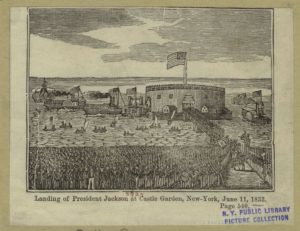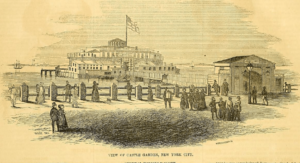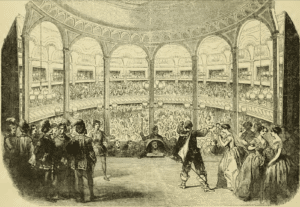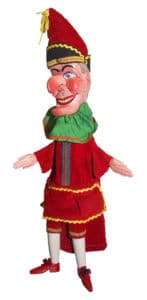Pigs, Puppets, and Performances
By Mark Schubin
On Site Opera’s puppet-based performance of The Perfect Pig on Little Island is not the first puppet-based opera in New York City. It’s also not the city’s first pig-based opera. It’s not even the first opera performance on a little artificial island in the Hudson River just off Manhattan.
In 1802, President Thomas Jefferson signed an Act establishing the U.S. Army Corps of Engineers. Five years later, to help protect New York harbor, the corps suggested creating an artificial island to house a battery of 28 cannons; each could shoot a 32-pound ball one-and-a-half miles. The fort, the West Battery (the East Battery a fort on Governors Island) never saw action and was given to the city in 1823.
A year after that, the New York Gas Light Company (today’s Con Edison) brought service to the island, and the former military installation became a dining and entertainment center named Castle Garden, reached by bridge from the larger Manhattan island. President Andrew Jackson visited it on June 11, 1833 (image at right from the Miriam and Ira D. Wallach Division of Art, Prints and Photographs: Picture Collection, The New York Public Library). Presidents John Tyler (1841), James Polk (1847), and Millard Fillmore (1851) were also received on the island.
Musical promoters Philip French & Christopher Heiser leased the structure, added a roof, and converted it to an opera house (image at left from Gleason’s Pictorial Drawing Room Companion, July 12, 1851, page 24). Soprano Jenny Lind, “the Swedish Nightingale,” made her American debut there. President Franklin Pierce visited the island to attend the opera.
Diarist George Templeton Strong noted all classes at the opera at Castle Garden “sit side by side fraternally on the hard benches” and there is “Ample room; cool sea breeze on the balcony, where one can sit and smoke and listen and look out on the bay studded with lights of anchored vessels, and white sails gleaming….” (at right, the Italian Opera Troupe at Castle Garden, Gleason’s Pictorial Drawing Room Companion, March 6, 1852, p. 148).
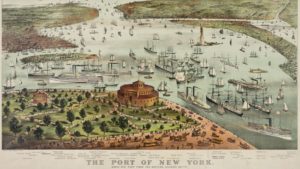
Where there are docks, there are drinking establishments, and at Whitehall Slip there was one at the Sign of the Spread Eagle, run by Hamilton Hewetson. In 1747, the earliest published mention of an opera in New York was an ad in The New-York Gazette for a performance there of “Punch’s Opera, Bateman, or the Unhappy Marriage, with a fine dialogue between Punch and his wife Joan, acted by a set of lively figures late from Philadelphia.” At right, Mr. Punch by Weymouth Professor Guy Higgins, photo by User Musphot on Wikimedia Commons. The first ad for a New York human opera appeared three years later.
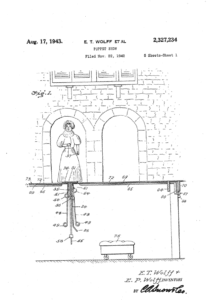
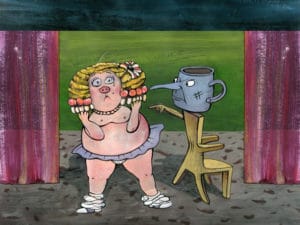
On Site Opera’s is best, of course. Not only is it The Perfect Pig, but the company is experienced in pig opera. After all, in 2014, it produced Rameau’s Pigmalion.
